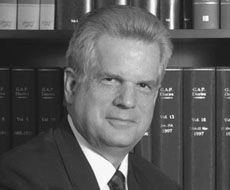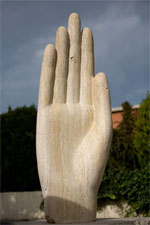Greg Prince on Trying to Bring People Back to Church
Posted on Oct 6, 2011 by Trevor in Religion
 The following is the second half of partial transcript I made of a Mormon Stories podcast interview with Greg Prince, whom I find absolutely fascinating. He is a modern-day renaissance man and represents Mormonism at its finest with his amazing knowledge, thoughtful tact, and raw honesty. At this point in the conference (about 1:35 in the audio podcast), the interviewer, in front of an audience very well educated in all the most problematic areas of the history of the LDS Church, poses what is unarguably a very difficult question: Can he make the case to those who have deliberately left church activity and persuade them to return to participation? Greg Prince gives an interesting answer that would be useful for anyone seeking to do the same in their own congregation.
The following is the second half of partial transcript I made of a Mormon Stories podcast interview with Greg Prince, whom I find absolutely fascinating. He is a modern-day renaissance man and represents Mormonism at its finest with his amazing knowledge, thoughtful tact, and raw honesty. At this point in the conference (about 1:35 in the audio podcast), the interviewer, in front of an audience very well educated in all the most problematic areas of the history of the LDS Church, poses what is unarguably a very difficult question: Can he make the case to those who have deliberately left church activity and persuade them to return to participation? Greg Prince gives an interesting answer that would be useful for anyone seeking to do the same in their own congregation.
John Dehlin: You know as much or more than any of us in the room about Church history, and yet you serve on a stake high council. And so I would love to give you a chance to tell us two things:
- How and what do you believe? What are the pillars of your faith? (I know that you’ve given a speech on this, but I’m asking you to summarize and add to it if you want to.) But what does your faith look like? [Note: I have the transcript to Prince’s answer to this question on a separate post]
- And, if you were to make a case to some of those who have chosen to disengage, to consider re-engaging, would you consider ending with that case, please?
Greg Prince: As far as trying to bring people back in, I’ll stand on what I said earlier this morning, that to me, you can sum it up in one question: “Does it work?” If it’s working for you, you’re likely to stay in. If it isn’t working for you, you’re likely not to stay in. And if you’re out and it wasn’t working for you and that’s the reason you left, it’s not likely that you’re gonna come back in. I don’t care how many home teachers bang on your door. It’s not going to work. We lost on that one as a tradition, and that’s very sad to me.
 I had made the comment from the back of the room earlier that about double the number of people in this country say they’re spiritual as say they’re churched. And I find that very sad because it’s like the old Zen Buddhist thing that used to go around in the sixties that we would contemplate the sound of one hand clapping. But that’s really what you’re dealing with there—that religion is two hands. One is the inner religiosity of the individual, and that’s good and that can be nurtured in a monastery. The other one is acting that religion out within a community of believers. And another community that isn’t a community of believers doesn’t give you the same result that the community of believers does. It’s that simple, and that’s why we have the congregations. Where they work, it’s magnificent. Where they don’t work, it can get ugly and it can drive people away.
I had made the comment from the back of the room earlier that about double the number of people in this country say they’re spiritual as say they’re churched. And I find that very sad because it’s like the old Zen Buddhist thing that used to go around in the sixties that we would contemplate the sound of one hand clapping. But that’s really what you’re dealing with there—that religion is two hands. One is the inner religiosity of the individual, and that’s good and that can be nurtured in a monastery. The other one is acting that religion out within a community of believers. And another community that isn’t a community of believers doesn’t give you the same result that the community of believers does. It’s that simple, and that’s why we have the congregations. Where they work, it’s magnificent. Where they don’t work, it can get ugly and it can drive people away.
But you need both of those hands working together, I think, to get the complete picture. So, if for you, who may not be in anymore but were in at one point, maybe it’s a combination of the two, or maybe it’s just the second hand that didn’t work.
Some of the questions that John talks about, if you’re grappling internally with some of these historical or doctrinal issues, maybe that’s what caused it not to work and you’re gone.
For others, it’s [that] the community was not loving, particularly if you’re part of an atypical community, be that race, or be that gender identification, or be that political. Because I have friends who have bailed out because they were Democrats and were made to feel there was no place for them in this Church, and they believed that. So there are any number of those reasons that the internal component may have been in order, but we managed to drive them away because we weren’t being the community that we should have been.
There’s no magic answer to it, John. And you know that. You’ve tried one-on-one thousands of times. What’s you success rate? Of bringing them back and holding them? It’s very, very low.
When I was an Elders Quorum president, we had a guy that had been inactive for years, and we put in a very strong effort and brought him back in. Mike Duffy. And Mike (Oh golly, was it ten or twelve years later?), after a long, long bought, died of leukemia. Well, Bill Marriot had been my supervisor in the stake presidency at the time I was the Elders Quorum President, and by the time Mike died, he was the stake president. I wrote him a little note informing him of Mike’s death, and he wrote back and he said Mike was one of the very few success stories in reactivation, meaning, that we brought him back, and he stayed, and it worked. It’s very difficult. Very, very difficult. It’s harder, I think, much harder, to bring somebody back into the Church than to bring somebody new in the first time.

